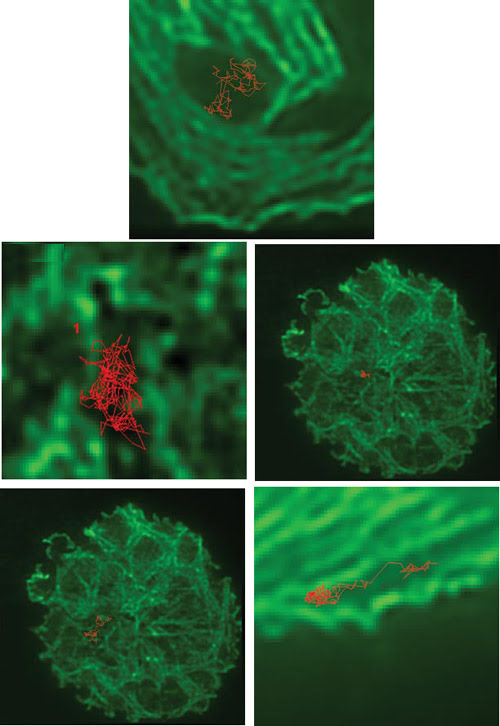
A less-fluid cell membrane
Nancy D. Lamontagne
Scientists once thought of the cell membrane as a fluid structure comprising freely moving proteins. However, as methods to label and track proteins emerged, it became clear that membranes contain areas with restricted protein diffusion. Since this discovery, how and why diffusion is restricted in certain areas has been the subject of many studies.

Now researchers at the University of New Mexico and at Sandia National Laboratories, both in Albuquerque, have produced images of the action taking place in these areas of restricted diffusion. The investigators, led by Diane Lidke, labeled actin with GFP and used two colors of quantum dots to label various molecules of the same receptor in the membrane. The two colors enabled them to observe close interactions of individual receptor molecules even when their emissions overlapped spatially.
Total internal reflection fluorescence microscopy as well as other methods allowed them to track the receptor movement while simultaneously observing the actin structure beneath the membrane. The researchers found that, as the receptors moved, they remained within a micron-size space without interacting with each other, as if restricted to that area. The experiments provided evidence that actin cables near the membrane define these areas of restricted diffusion, forming a dynamic labyrinth that can reorganize on time scales of 1 to 10 s. The images show “actin corrals,” with actin in green and the movements of receptors tracked in red.
The research, published in the August issue of Nature Cell Biology, adds evidence that the cell membrane is very complex and highly structured rather than fluid.
Published: September 2008